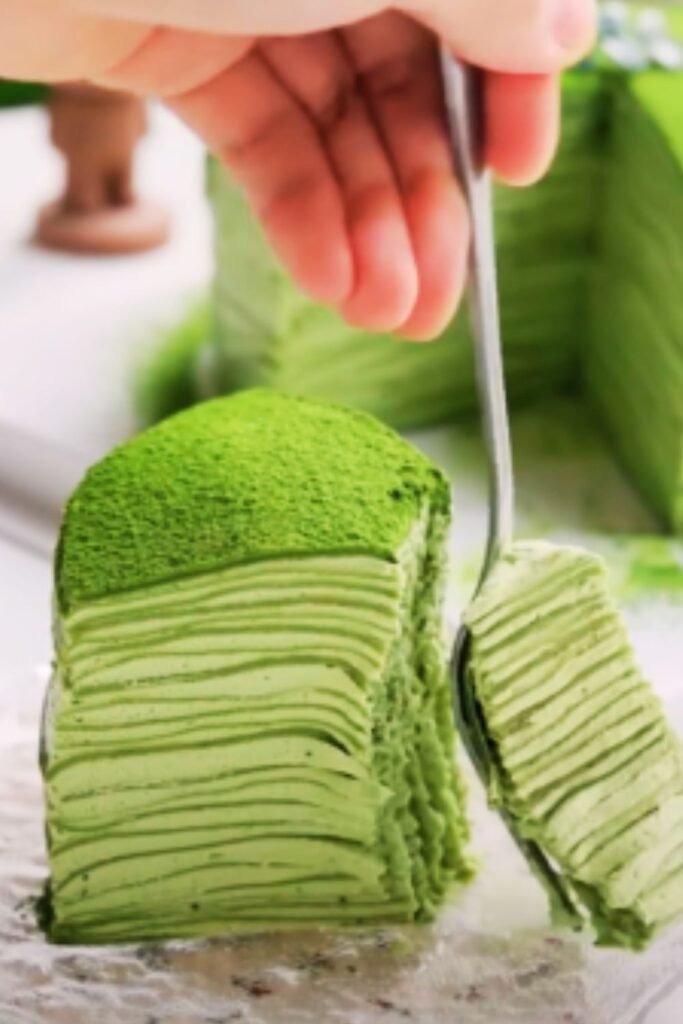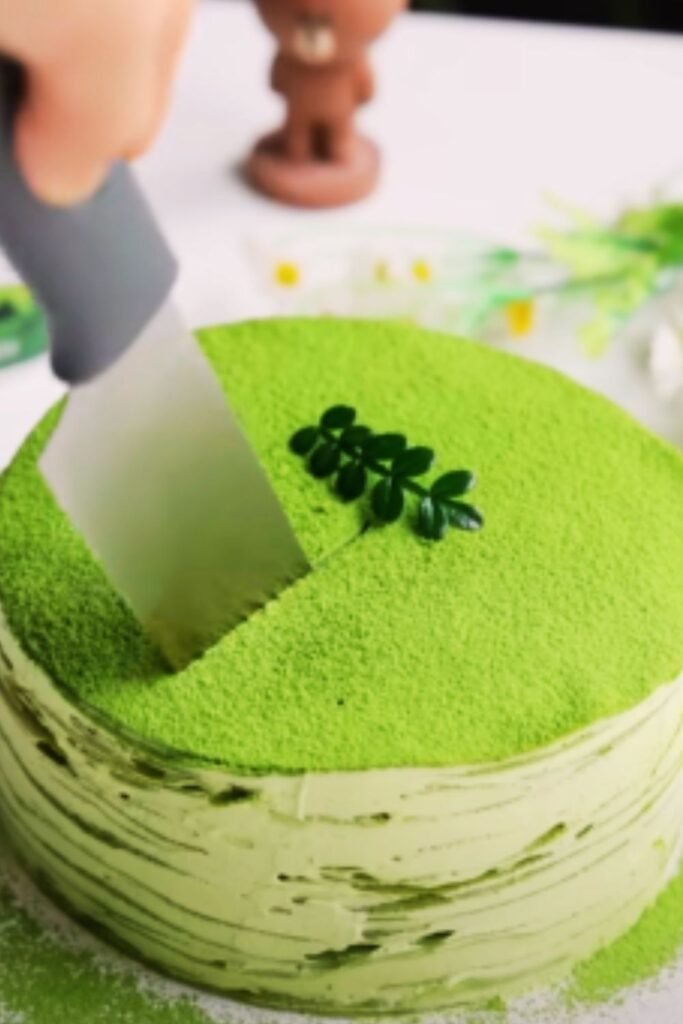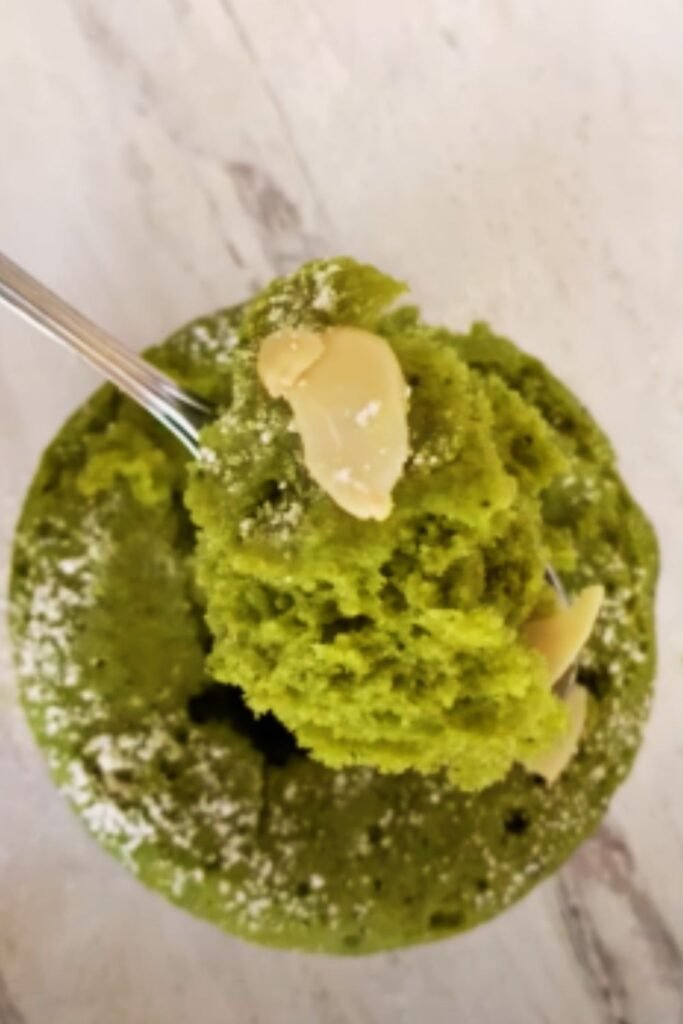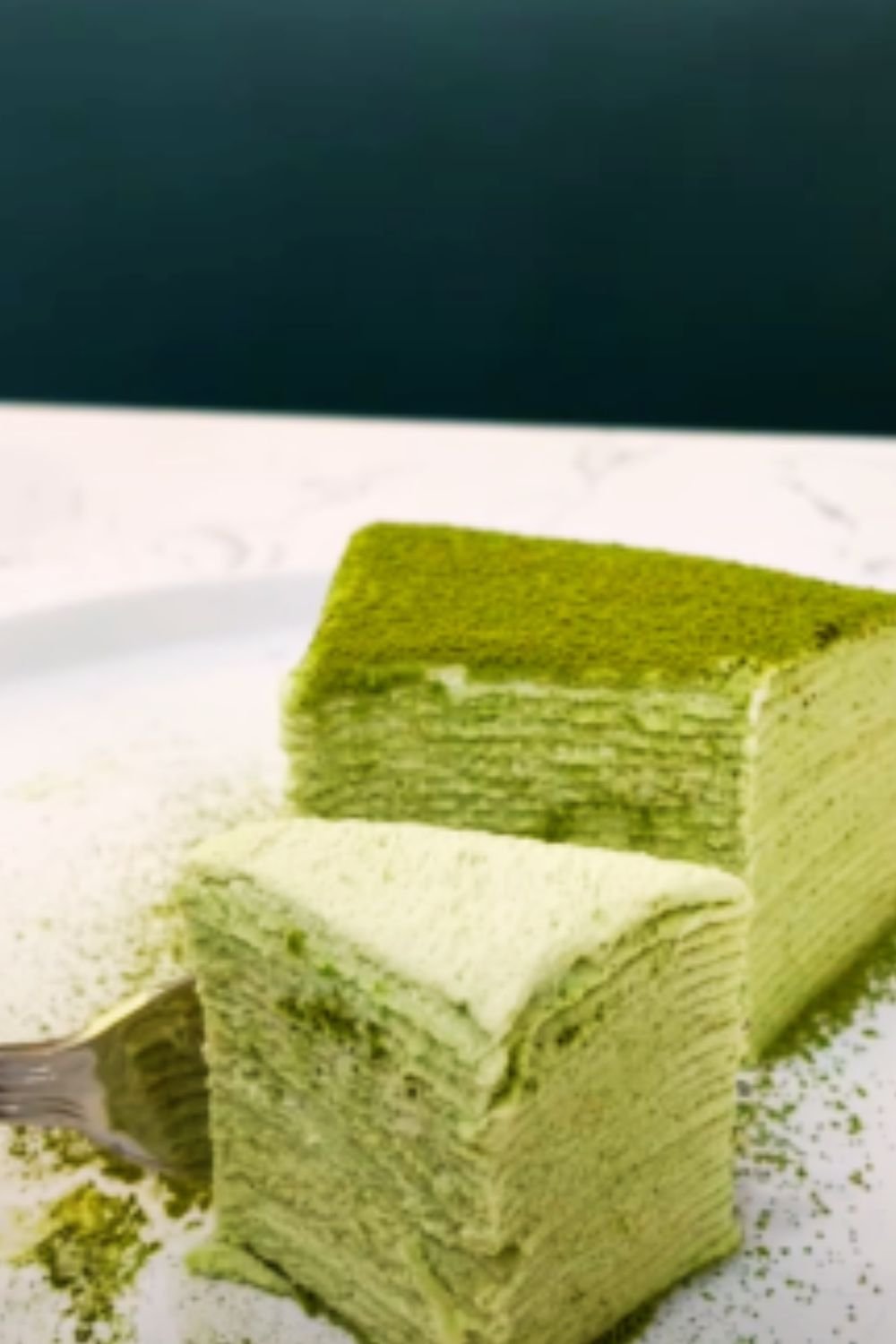There’s something magical about the first time you taste a perfectly made matcha cake. I still remember my initial encounter – that beautiful green hue, the earthy aroma, and that unique flavor profile that’s simultaneously sweet, grassy, and slightly bitter. Matcha cake isn’t just a dessert; it’s an experience that celebrates one of Japan’s most treasured ingredients in a form that everyone can appreciate.
As someone who has baked countless matcha cakes over the years, I’ve learned that the beauty of this dessert lies not just in its distinctive color and flavor, but in its versatility. From light and fluffy sponges to dense and moist pound cakes, matcha powder transforms ordinary cake recipes into extraordinary creations that surprise and delight with every bite.
In this comprehensive guide, I’ll share everything I’ve learned about creating the perfect matcha cake. We’ll explore the history of matcha in baking, what makes quality matcha powder, and I’ll walk you through several foolproof recipes that showcase this incredible ingredient in different ways. By the end, you’ll have all the knowledge and confidence you need to create your own stunning matcha masterpiece.
The History and Origins of Matcha in Desserts
Before we dive into baking, let’s take a moment to appreciate where matcha comes from and how it found its way into our cakes and pastries.
Matcha has been central to Japanese tea ceremonies for over 800 years, but its journey into Western desserts is relatively recent. Traditional Japanese wagashi (sweet confections) have incorporated matcha for centuries, but the green tea powder only began appearing in Western-style cakes and pastries in the late 20th century as global interest in Japanese cuisine expanded.
The first matcha cakes likely emerged in Japanese bakeries that specialized in Western-style desserts (known as yōgashi). These early creations combined European baking techniques with the distinct flavor and color of matcha powder. As international travel and cultural exchange increased, pastry chefs worldwide began experimenting with matcha, fascinated by both its visual impact and complex flavor profile.
Today, matcha desserts have achieved global popularity, appearing in high-end patisseries and neighborhood bakeries alike. The distinctive flavor pairs beautifully with so many ingredients – from white chocolate to black sesame, from strawberries to yuzu citrus – making it an incredibly versatile addition to the modern baker’s pantry.
Understanding Matcha Quality for Baking
Not all matcha powders are created equal, and choosing the right one for your cake makes all the difference in the final result.
Matcha is categorized primarily into culinary grade and ceremonial grade:
Culinary Grade : Designed specifically for cooking and baking, this matcha has a stronger, more robust flavor that stands up to other ingredients. It’s typically less expensive than ceremonial grade, making it practical for recipes. The color tends to be a less vibrant green, but still provides that beautiful matcha hue to your bakes.
Ceremonial Grade : The highest quality matcha intended for drinking as tea. It has a more delicate, nuanced flavor and a vibrant green color. While it can certainly be used in baking, its subtle notes may get lost among other ingredients, and its premium price makes it less practical for everyday baking projects.
For matcha cakes, I recommend using a mid-to-high quality culinary grade matcha. This gives you the perfect balance of flavor, color, and value. Here’s what to look for when purchasing matcha for baking:
- Color: Even culinary grade should have a vibrant green color. If it appears dull or yellowish, it may be old or poor quality.
- Origin: Matcha from Japan, particularly from regions like Uji, Nishio, and Kyushu, tends to be higher quality.
- Texture: Good matcha should be very fine and smooth, almost like eyeshadow in texture.
- Packaging: Look for matcha sold in opaque, airtight containers that protect it from light and oxygen.
- Freshness: Check the production date if available. Matcha is best used within 6-8 weeks after opening.
A common misconception is that any green tea powder can substitute for matcha. However, regular green tea powder is made from tea leaves processed differently and won’t provide the same flavor, color, or texture in your baking. True matcha is shade-grown, specially harvested, and stone-ground, resulting in its unique characteristics.

Essential Ingredients for a Perfect Matcha Cake
Creating a sublime matcha cake requires attention not just to the matcha itself, but to all the components that will complement and enhance its distinctive profile. Here are the key ingredients that will help you achieve matcha cake perfection:
Core Ingredients
| Ingredient | Purpose | Recommended Type | Tips |
|---|---|---|---|
| Matcha Powder | Provides color and flavor | Culinary grade | Sift before using to remove lumps |
| Flour | Structure and texture | Cake flour | Lower protein content yields a more tender crumb |
| Sugar | Sweetness to balance matcha’s bitterness | Granulated white sugar | Superfine dissolves more easily |
| Butter | Richness and moisture | Unsalted | Room temperature for proper creaming |
| Eggs | Structure, leavening, moisture | Large, grade A | Room temperature for maximum volume |
| Milk or Cream | Moisture and tenderness | Whole milk or heavy cream | Full-fat provides best texture |
| Leavening Agents | Rise and lightness | Baking powder/soda | Check freshness before using |
| Salt | Flavor enhancement | Fine sea salt | Even a small amount makes a big difference |
Supporting Ingredients
| Ingredient | Purpose | Pairing Notes |
|---|---|---|
| White Chocolate | Creaminess that complements matcha | The subtle cocoa butter notes enhance matcha’s flavor |
| Vanilla Extract | Depth and warmth | Use sparingly to avoid overwhelming the matcha |
| Cream Cheese | Tangy counterpoint | Perfect in frosting to balance matcha’s bitterness |
| Almond Extract | Subtle nuttiness | A few drops can add complexity |
| Coconut Milk | Tropical notes | Can replace regular milk for an exotic twist |
The quality of each ingredient matters, but perhaps none more than the eggs and butter. Free-range eggs with vibrant yolks will give your cake a better structure and richer flavor. Similarly, a high-quality European-style butter with higher fat content will produce a more tender, flavorful crumb.
For the adventurous baker, consider incorporating uniquely Japanese ingredients that naturally complement matcha:
- Yuzu zest for a citrusy brightness
- Black sesame seeds for a nutty contrast
- Adzuki (red bean) paste as a filling
- Kinako (roasted soybean flour) for dusting
Each of these ingredients has a long history of being paired with matcha in traditional Japanese sweets and can elevate your cake to new heights of authenticity and flavor complexity.
Basic Matcha Cake Recipe (Matcha Sponge Cake)
Let me share my go-to recipe for a classic matcha sponge cake that never fails to impress. This light, airy cake makes a perfect base for layer cakes or can be enjoyed on its own with a light dusting of powdered sugar.
Ingredients
- 1¾ cups (200g) cake flour
- 2 tablespoons (15g) high-quality culinary grade matcha powder
- 1½ teaspoons baking powder
- ½ teaspoon salt
- ½ cup (113g) unsalted butter, room temperature
- 1¼ cups (250g) granulated sugar
- 3 large eggs, room temperature
- 1 teaspoon vanilla extract
- ¾ cup (180ml) whole milk, room temperature
Method
- Preheat your oven to 350°F (175°C). Grease two 8-inch round cake pans and line the bottoms with parchment paper.
- In a medium bowl, sift together the cake flour, matcha powder, baking powder, and salt. Sifting is crucial for matcha cakes to ensure no lumps remain, which would create dark specks in your finished cake.
- In a large mixing bowl, cream the butter and sugar together until light and fluffy, about 3-4 minutes. This step is vital for creating air pockets that help the cake rise properly.
- Add the eggs one at a time, beating well after each addition. Scrape down the sides of the bowl as needed to ensure even mixing.
- Stir in the vanilla extract.
- Add the dry ingredients in three parts, alternating with the milk, beginning and ending with the dry ingredients. Mix only until just combined after each addition. Overmixing will develop gluten and result in a tougher cake.
- Divide the batter evenly between the prepared pans and smooth the tops with a spatula.
- Bake for 23-28 minutes, or until a toothpick inserted into the center comes out clean or with a few moist crumbs.
- Allow the cakes to cool in the pans for 10 minutes, then turn out onto wire racks to cool completely.
White Chocolate Matcha Frosting
For the perfect complement to your matcha sponge cake, try this white chocolate matcha frosting that enhances the cake’s flavor without overwhelming it.
Ingredients
- 8 oz (225g) white chocolate, chopped
- 1 cup (225g) unsalted butter, room temperature
- 3 cups (360g) powdered sugar, sifted
- 2 teaspoons matcha powder, sifted
- 2 tablespoons heavy cream
- Pinch of salt
Method
- Melt the white chocolate in a heatproof bowl over a pot of barely simmering water, stirring occasionally until smooth. Remove from heat and let cool until lukewarm.
- In a large mixing bowl, beat the butter until creamy.
- Gradually add the powdered sugar and beat until light and fluffy.
- Mix in the matcha powder until fully incorporated.
- Add the melted white chocolate and beat until smooth.
- Add the heavy cream and salt, then beat until the frosting is light and fluffy, about 3-4 minutes.
- Use immediately to frost your cooled cake layers.
This frosting strikes the perfect balance between sweet white chocolate and earthy matcha, creating a harmonious flavor that complements the cake without masking its subtle notes.

Variations: 4 Exciting Matcha Cake Styles
One of the things I love most about working with matcha is its versatility. Here are four different ways to incorporate matcha into your cake baking repertoire:
1. Matcha Marble Cake
This beautiful cake showcases matcha’s vibrant color in an artistic swirl pattern.
Method Highlights:
- Prepare a basic vanilla cake batter
- Remove about 1/3 of the batter to a separate bowl
- Add 2 tablespoons sifted matcha powder to the smaller portion and mix well
- Alternate dollops of each batter in your cake pan
- Use a knife or skewer to create gentle swirls (don’t overmix)
- Bake as directed in your vanilla cake recipe
2. Matcha Cheesecake
The creamy tanginess of cheesecake provides the perfect backdrop for matcha’s complex flavors.
Key Ingredients:
- 2 tablespoons matcha powder for the filling
- Graham cracker or digestive biscuit crust
- 24 oz cream cheese
- ¾ cup sugar
- 3 large eggs
- ½ cup sour cream
- Optional: white chocolate chips folded into the batter
3. Matcha Chiffon Cake
Incredibly light and airy, this foam-style cake lets matcha’s flavor shine.
Technique Tips:
- Separate eggs carefully – even a speck of yolk can prevent whites from whipping properly
- Fold the matcha-flour mixture into whipped egg whites with a large spatula using a gentle cutting motion
- Bake in an ungreased tube pan
- Invert immediately after baking until completely cool
4. Matcha Swiss Roll
A delicate sponge cake rolled around a creamy filling – visually stunning and delicious.
Critical Steps:
- Bake in a shallow jelly roll pan lined with parchment
- Turn out immediately onto a sugar-dusted towel while hot
- Roll up with the towel while still warm to prevent cracking
- Allow to cool completely before unrolling, filling, and re-rolling
- Common fillings include whipped cream, red bean paste, or white chocolate mousse
Each of these variations showcases matcha in a different way, allowing you to explore the full range of possibilities this incredible ingredient offers.
Common Matcha Cake Problems and How to Fix Them
Even experienced bakers can encounter challenges when working with matcha. Here are solutions to the most common issues:
Problem: Dull Green Color
Causes:
- Low-quality or old matcha powder
- Too much exposure to heat during baking
Solutions:
- Invest in higher quality, fresher matcha powder
- Don’t overbake – check cake earlier than recipe suggests
- Add a tiny pinch of baking soda to preserve the vibrant green color
- Store matcha in an airtight, opaque container in the refrigerator
Problem: Bitter Taste
Causes:
- Too much matcha powder
- Low-quality matcha with high tannin content
- Insufficient sweetener to balance bitterness
Solutions:
- Start with less matcha and adjust to taste
- Balance with adequate sweetness (white chocolate works particularly well)
- Add a small amount of vanilla to round out the flavor
- Consider a complementary filling or frosting to balance intensity
Problem: Dense, Heavy Texture
Causes:
- Overmixing the batter after adding flour
- Improper ingredient temperatures
- Incorrect leavening agent amounts
Solutions:
- Mix just until ingredients are combined
- Ensure all refrigerated ingredients reach room temperature before use
- Check that baking powder/soda is fresh and active
- Consider sifting dry ingredients twice for more air incorporation
Problem: Sinking in the Middle
Causes:
- Opening the oven door too early
- Underbaking
- Too much leavening agent
Solutions:
- Resist opening the oven until at least 80% through the baking time
- Test with a toothpick before removing from oven
- Measure leavening agents precisely
- Consider reducing your oven temperature by 25°F and baking longer
This troubleshooting guide should help you achieve matcha cake perfection, even if your first attempt doesn’t turn out exactly as planned. Remember, even professional bakers occasionally have mishaps – it’s all part of the learning process!

Decorating Your Matcha Cake
A beautiful matcha cake deserves decoration that enhances both its appearance and flavor profile. Here are some stunning ways to finish your creation:
Complementary Flavors and Colors
Matcha’s green hue creates wonderful visual contrast with:
- Fresh berries (especially strawberries and raspberries)
- Edible flowers (like chrysanthemums or violets)
- Cream cheese or white chocolate decorations
- Black sesame seeds or crushed pistachios
- Yuzu or lemon zest
Frosting Techniques
- Naked Cake Style: Apply minimal frosting on the outside to let the green cake layers show through
- Ombré Effect: Graduate the amount of matcha in your frosting to create varying shades of green
- Japanese-Inspired Patterns: Use a pastry comb to create wave patterns reminiscent of Japanese gardens
- Matcha Dusting: Lightly dust the top with additional matcha powder using a small sieve and stencils for design
- Drip Technique: White chocolate ganache drips down the sides create an elegant, modern look
Natural Decorations
For a more organic, wabi-sabi aesthetic that honors matcha’s Japanese heritage:
- Seasonal fruits arranged simply
- Sakura (cherry blossom) petals (when in season)
- Crystallized ginger pieces
- Bamboo leaves (for plating, not eating)
- Gold leaf accents for special occasions
Remember that when working with matcha, sometimes less is more. The natural beauty of the cake itself, with its distinctive color, often needs only minimal embellishment to make a stunning impression.
Serving Suggestions and Pairings
How you serve your matcha cake can elevate the experience from merely delicious to truly memorable. Here are my recommendations for creating the perfect matcha moment:
Beverage Pairings
Matcha cake pairs beautifully with:
- Japanese Green Tea: A light sencha provides a pleasant contrast
- Genmaicha: The roasted rice notes complement matcha’s grassiness
- Iced Hojicha: A roasted green tea that balances matcha’s intensity
- Black Coffee: The bitterness creates an interesting counterpoint
- Almond Milk: Its subtle nuttiness enhances matcha’s complexity
- Sparkling Water with Yuzu: Refreshing and palate-cleansing
Serving Temperature
Matcha cake reveals different flavor notes at different temperatures:
- Chilled: Emphasizes the sweetness and subtle chocolate notes
- Room Temperature: Provides the most balanced flavor profile
- Slightly Warm: Brings forward matcha’s aromatic qualities
Accompaniments
Consider serving your matcha cake with:
- A small scoop of black sesame or vanilla ice cream
- Fresh seasonal fruit, particularly berries or sliced peaches
- A dollop of lightly sweetened whipped cream
- Red bean paste on the side
- A sprinkle of kinako (roasted soybean powder)
Presentation
For a truly authentic experience:
- Serve on minimalist, earthy ceramic plates
- Use bamboo or wooden serving utensils
- Include a small fresh flower or leaf garnish
- Consider traditional Japanese textiles as table linens
- Provide small portions that encourage mindful enjoyment
Remember that in Japanese food culture, presentation is considered as important as flavor. Taking time to serve your matcha cake thoughtfully honors both the ingredient and those fortunate enough to enjoy your creation.
Storage and Make-Ahead Tips
Matcha cakes require special care to maintain their vibrant color and delicate flavor. Here’s how to keep your creation at its best:
Short-Term Storage (1-3 days)
- Unfrosted cakes: Wrap tightly in plastic wrap and store at room temperature
- Frosted cakes: Store in a cake keeper in the refrigerator, but bring to room temperature before serving
- Avoid: Direct sunlight, which can fade the green color quickly
Long-Term Storage
- Unfrosted cake layers freeze beautifully for up to 2 months
- Wrap each layer individually in plastic wrap, then aluminum foil
- Label with date and contents
- Thaw overnight in the refrigerator before unwrapping to prevent condensation on the cake
Make-Ahead Components
For stress-free entertaining:
| Component | Can Be Made Ahead | Storage Method | Max Time |
|---|---|---|---|
| Cake layers | Yes | Freeze wrapped | 2 months |
| Buttercream frosting | Yes | Refrigerate, then bring to room temp and re-whip | 1 week |
| Whipped cream frosting | No | Must be made fresh | Same day |
| Filled cake | Yes | Refrigerate | 3 days |
| Decorated cake | Yes | Refrigerate | 2 days |
Reviving Day-Old Cake
If your cake has dried slightly:
- Brush layers with simple syrup flavored with a hint of matcha
- Create a moisture tent by loosely covering with plastic wrap for a few hours
- Serve with a sauce or fresh cream to add moisture
Following these storage guidelines will ensure your matcha cake remains as delicious on day three as it was when freshly baked.
Q&A Section: Your Matcha Cake Questions Answered
Over the years, I’ve received countless questions about baking with matcha. Here are answers to the most frequently asked:
Q: Can I substitute regular green tea for matcha powder in cake recipes?
No, regular green tea and matcha powder are quite different. Matcha is specially grown, processed, and stone-ground into a fine powder where the entire leaf is consumed. Regular green tea is made from steeped leaves and lacks the vibrant color, texture, and concentrated flavor needed for baking. There’s really no substitute that will give you authentic results.
Q: Why did my matcha cake turn brown during baking?
Matcha can oxidize and turn brown when exposed to high heat for too long. To preserve the color: 1) Don’t overbake, 2) Consider lowering your oven temperature by 25°F and baking slightly longer, 3) Add a tiny pinch of baking soda to help maintain the green color, and 4) Use fresh, high-quality matcha powder.
Q: How much matcha powder should I use for my first cake?
For beginners, I recommend starting with 1-2 tablespoons of matcha powder per cake. This gives you a noticeable flavor and color without risking bitterness. As you become more familiar with matcha’s intensity, you can adjust to your preference. Remember that different brands vary in strength, so you may need to experiment.
Q: Does matcha cake contain caffeine?
Yes, matcha powder contains caffeine, though the amount in a slice of cake is relatively small. A typical slice might contain 10-25mg of caffeine (compared to about 95mg in a cup of coffee). If you’re very sensitive to caffeine, consider enjoying your matcha cake earlier in the day.
Q: How do I know if my matcha powder is still good for baking?
Fresh matcha should have a vibrant green color and pleasant, grassy aroma. If your matcha has turned dull olive-green or yellowish, or if it smells musty or flat, it’s past its prime. For best results, store matcha in an airtight, opaque container in the refrigerator and use within 6-8 weeks of opening.
Q: Can I make matcha cake gluten-free?
Absolutely! Matcha pairs beautifully with many gluten-free flour blends. I recommend a 1:1 gluten-free flour blend that contains xanthan gum. Rice flour-based blends work particularly well with matcha’s flavor profile. You may need to increase the liquid slightly as gluten-free flours tend to absorb more moisture.
Q: What’s the secret to a moist matcha cake?
Several factors contribute to moisture: 1) Don’t overbake – test early and often, 2) Use ingredients at room temperature for better emulsification, 3) Consider adding a tablespoon of vegetable oil in addition to butter for extra moisture, 4) Incorporate ingredients like yogurt or sour cream, and 5) Store properly to prevent moisture loss.
Final Thoughts: The Joy of Matcha Baking
There’s something profoundly satisfying about creating a beautiful matcha cake. Perhaps it’s the way the vibrant green color transforms an ordinary dessert into something extraordinary. Or maybe it’s the complex flavor that keeps revealing new notes with each bite – first grassy sweetness, then subtle umami, finishing with that characteristic gentle bitterness.
What I love most about baking with matcha is how it connects us to centuries of Japanese tea tradition while allowing for endless creative expression. Each time I fold that vivid green powder into cake batter, I feel a connection to both history and innovation.
As you embark on your own matcha cake journey, I encourage you to approach it with the same mindfulness that characterizes traditional Japanese tea ceremony. Notice the colors, the textures, the aromas. Take time to appreciate the process as much as the finished creation.
Whether you’re making your first matcha sponge cake or experimenting with elaborate matcha layer cakes, remember that each bake is an opportunity to learn and grow. Some attempts will be perfect; others might teach you valuable lessons. All are part of the joyful path of becoming fluent in the language of matcha baking.
I hope this guide inspires you to pick up some quality matcha powder and start creating your own green tea masterpieces. Your kitchen will smell amazing, your taste buds will thank you, and your friends and family will be thoroughly impressed by your Japanese-inspired creations. Happy baking!


